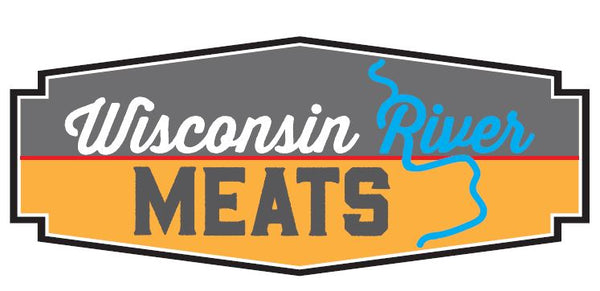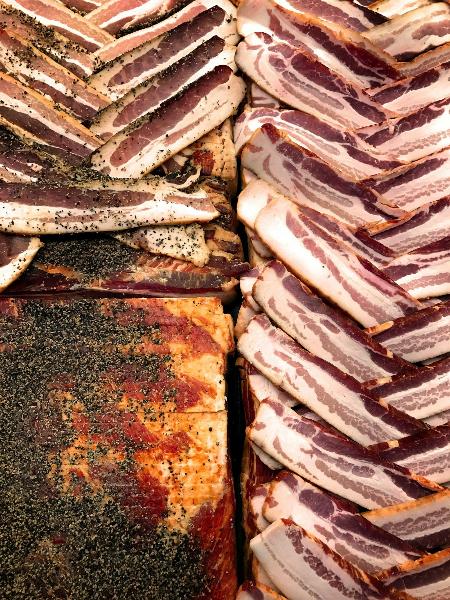The Ultimate Guide to Cooking Chicken Breast: Baking, Boiling, and Beyond
Share
Chicken breast is one of the most popular proteins in kitchens across America. It’s affordable, versatile, high in protein, and low in fat, which makes it a staple whether you’re meal prepping for the week, cooking for your family, or creating nutritious lunches. But as many people have discovered, chicken breast can also be tricky to cook perfectly — ending up dry, bland, or rubbery if you don’t handle it properly.
Two of the simplest and most classic methods for cooking chicken breast are baking and boiling. Each technique has advantages, and both can deliver a juicy, flavorful result when you know what you’re doing.
At Wisconsin River Meats, where we believe good food should be made with respect and quality, we want to make sure you know exactly how long to bake chicken breast, how long to boil chicken breast, and how to avoid the most common mistakes that lead to dried-out or flavorless poultry.
Here’s your complete guide to perfectly cooked chicken breast — plus some extra tips on seasonings, side dishes, storage, and creative ways to enjoy your leftovers.

Why Choose Chicken Breast?
Before diving into how long to bake or boil it, let’s talk about why chicken breast is such a popular choice:
-
Lean protein: about 26 grams of protein per 3-ounce serving
-
Low fat: especially when skinless
-
Versatile: works in virtually any cuisine
-
Quick-cooking: ready in 20–30 minutes
-
Budget-friendly: accessible and economical
Chicken breast is also naturally mild, which means it takes on seasonings and sauces beautifully. Whether you’re roasting with classic herbs or shredding it for tacos, it is a reliable, delicious protein for almost any meal.
How Long to Bake Chicken Breast
Baking is one of the easiest and most consistent ways to cook chicken breast. You don’t have to stand over the stove, and you can even bake an entire tray to use in meal prep for the week.
General guidelines for baking boneless, skinless chicken breast:
-
Temperature: 400°F (204°C)
-
Time: about 20–25 minutes, depending on thickness
For best results, aim for an internal temperature of 165°F (74°C) measured with a meat thermometer in the thickest part of the breast. Thinner breasts may be ready in as little as 18 minutes, while extra-thick ones could take up to 30 minutes.
Tips for Juicy Baked Chicken Breast
-
Pound to even thickness: Thicker parts of the breast take longer to cook, so pound your chicken to about ¾–1 inch thick for even results.
-
Brine beforehand: A simple brine of salt and water for 30 minutes can help the meat hold onto moisture.
-
Use a drizzle of oil or melted butter: This coats the meat and prevents drying out.
-
Cover with foil: Lock in moisture while baking.
-
Let it rest: After baking, rest the chicken 5–10 minutes before slicing to keep juices inside.

Flavoring Your Baked Chicken
The mild taste of chicken breast pairs well with almost any seasoning. Try these ideas:
-
Italian seasoning with garlic and olive oil
-
Lemon zest, thyme, and rosemary
-
Cajun spices with a touch of smoked paprika
-
Classic barbecue sauce brushed on in the last 5 minutes
-
Honey-mustard glaze
If you’re looking to keep calories low, simple salt, pepper, and a squeeze of fresh lemon is a delicious, healthy combination.
How Long to Boil Chicken Breast
Boiling chicken breast is a straightforward way to cook it quickly, especially if you want to shred it for salads, casseroles, tacos, or sandwiches.
General guidelines for boiling boneless, skinless chicken breast:
-
Bring to a boil: place chicken breasts in a pot and cover with water or broth by about 1 inch.
-
Reduce heat: once boiling, reduce to a simmer.
-
Time: simmer for 12–16 minutes, depending on size and thickness.
Always check doneness by slicing the thickest part or using a thermometer — you still want 165°F (74°C) to make sure the chicken is safe to eat.

Tips for Moist Boiled Chicken Breast
-
Season your cooking liquid: add salt, peppercorns, bay leaf, garlic, or onion to infuse subtle flavor.
-
Avoid a rolling boil: simmer gently instead, which prevents toughening the proteins.
-
Let rest before shredding: rest for a few minutes to hold in moisture.
Boiled chicken is a fantastic base protein for chicken salad, enchiladas, soups, or even a quick pasta dish.
Should You Bake or Boil Chicken Breast?
There is no wrong answer — it depends on what you’re making.
Bake it if you want to:
-
Enjoy seasoned or marinated chicken as a standalone entree
-
Get a golden, slightly caramelized exterior
-
Cook large quantities evenly in the oven
Boil it if you want to:
-
Shred chicken for another dish (like pulled chicken tacos)
-
Quickly cook chicken for meal prep
-
Keep the flavor very neutral to use in multiple recipes
Both techniques can deliver perfectly juicy, tender chicken if you watch cooking times and temperatures carefully.
Chicken Breast Food Safety
Chicken, like any poultry, must be cooked to a safe internal temperature of 165°F (74°C) to kill harmful bacteria. Never guess — use an instant-read thermometer to check.
Always:
-
Wash your hands after handling raw chicken
-
Clean cutting boards and utensils with hot, soapy water
-
Store raw chicken in the fridge below 40°F, and cook within 1–2 days
-
Freeze if you can’t cook it right away
How to Store Leftover Cooked Chicken Breast
-
Refrigerate within 2 hours of cooking
-
Store in a sealed container for up to 4 days
-
Freeze for up to 3 months in an airtight freezer bag
-
Thaw overnight in the refrigerator before reheating
Reheat leftover chicken gently — in the microwave at 50% power or covered in the oven at 325°F — to avoid drying it out.

Leftover Chicken Breast Recipe Ideas
Chicken breast is one of the best ingredients for leftovers because it adapts to so many dishes. Try these easy ideas:
-
Slice into wraps with lettuce, tomato, and a light dressing
-
Dice and toss into pasta with marinara sauce
-
Add to vegetable stir-fry
-
Layer into quesadillas with cheese and peppers
-
Stir into homemade chicken noodle soup
-
Top a green salad with shredded chicken for a protein boost
You can even make a quick chicken salad with a little mayonnaise, celery, onion, and seasonings for sandwiches.
Flavor Pairings for Chicken Breast
Because chicken is so mild, you can get creative with flavors:
-
Citrus: lemon, lime, or orange for brightness
-
Herbs: basil, parsley, cilantro, rosemary, thyme
-
Spices: smoked paprika, curry, chili powder, cumin
-
Sweet glazes: honey, maple syrup, or balsamic reduction
-
Savory sauces: soy, teriyaki, Dijon mustard
These combinations bring variety to your meals so chicken never feels boring.
Frequently Asked Questions
Can you bake chicken breast from frozen?
Yes, but you’ll need to extend cooking time by about 50%. Plan for 35–45 minutes at 400°F, and always check the center reaches 165°F.
Should you rinse chicken breast before cooking?
No — rinsing raw poultry can spread bacteria around your sink area. Simply pat dry with paper towels.
What is the best oil for baking chicken breast?
Olive oil works beautifully, but you can also use avocado oil or melted butter for a richer flavor.
Can you boil chicken breast with skin on?
Yes, but the skin will turn rubbery. Most people remove the skin if they plan to boil it.
Mistakes to Avoid When Cooking Chicken Breast
-
Skipping the thermometer: guessing leads to dry or unsafe chicken.
-
Overcooking: the #1 reason chicken gets tough.
-
Forgetting to rest: slicing right away causes juices to spill out.
-
Uneven thickness: results in overdone thin ends and undercooked thick parts. Pound to even thickness.
-
Not seasoning enough: plain chicken breast needs help from herbs, spices, or a marinade.
More Ways to Cook Chicken Breast
Beyond baking and boiling, you can prepare chicken breast in other simple ways:
-
Grilling: about 6–8 minutes per side on medium-high, brushing with marinade or sauce
-
Pan-searing: 4–5 minutes per side in a skillet, finishing in the oven if needed
-
Poaching: gently simmering in broth with aromatics, similar to boiling but even more gentle
-
Air frying: a modern method that takes about 15–18 minutes at 375°F
The same principle applies: aim for 165°F inside, rest before slicing, and avoid overcooking.

Meal Prep with Chicken Breast
Baked or boiled chicken breast is one of the best proteins for weekly meal prep. Here’s how to make the most of it:
-
Bake or boil 4–6 breasts at once
-
Cool and store in the fridge
-
Slice or shred for salads, grain bowls, wraps, or quick pasta
-
Freeze extras in portions so you can rotate flavors each week
Adding different sauces, salsas, or spice rubs keeps things interesting. One week you might go Mediterranean with olive oil and oregano, the next a smoky barbecue or even a soy-ginger glaze.
Food Safety Recap
-
Always cook to 165°F (74°C) internal
-
Wash hands and surfaces after handling raw chicken
-
Store cooked chicken within 2 hours
-
Use leftovers within 4 days
Final Thoughts
Baking and boiling chicken breast are two of the most reliable, convenient ways to get a nutritious protein on the table. When you know how long to bake chicken breast — about 20–25 minutes at 400°F — and how long to boil chicken breast — simmer 12–16 minutes — you can plan meals confidently and keep your chicken juicy and safe.
Chicken breast is a blank canvas for flavor. From citrusy herbs to sweet glazes, there’s no limit to how you can customize it for your family’s tastes. And with a little planning, you can transform a few simple chicken breasts into lunches, dinners, and even snacks throughout the week.
At Wisconsin River Meats, we believe in helping you cook with confidence. Whether you’re baking, boiling, grilling, or pan-searing, start with good-quality meat, follow a few simple rules, and enjoy honest, satisfying results every time.

